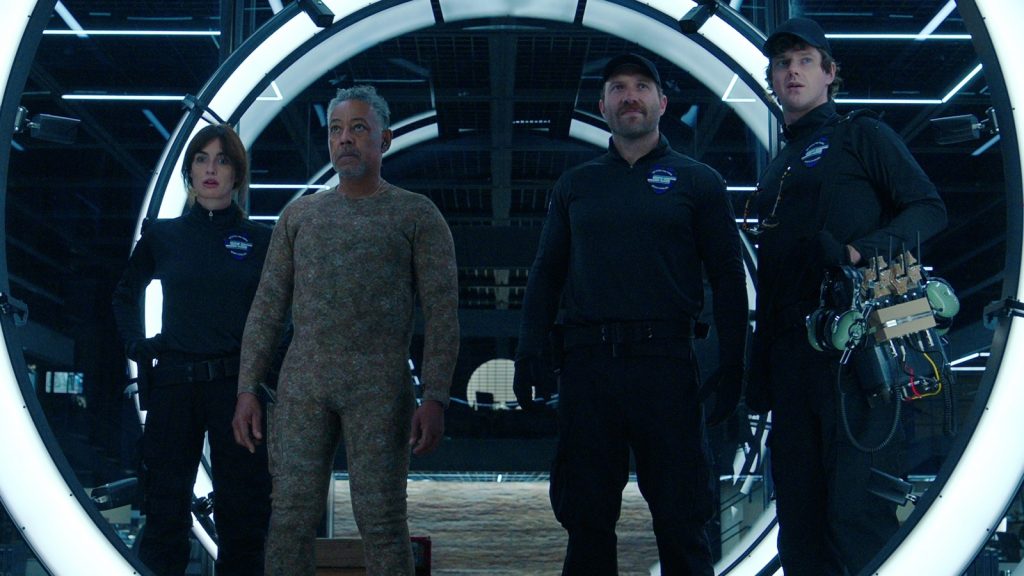Netflix’s new drama series Kaleidoscope is an innovative approach to storytelling, comprising 8 episodes that can be watched in any order. The episodes explore the events leading up to and following a heist, with one episode focused on the theft itself. This unique format is sure to excite specific viewers. Kaleidoscope allows viewers to watch the episodes in any order they desire, whether in the random order suggested by Netflix or a personally-chosen sequence. This freedom from traditional linear scheduling and storytelling is a continuation of Netflix’s efforts to provide a flexible and personalized viewing experience.
Kaleidoscope offers 40,320 possible viewing experiences with its 8 episodes, which are named after colors and can be watched in any order. The show encourages viewers to end with the “White” episode, which portrays the heist itself, but there are no restrictions on the order in which the episodes can be watched. The “Green” and “Violet” episodes are flashbacks, while “Red” takes place after the heist and “Blue” shows the heist being planned. Unlike the interactive Black Mirror special “Bandersnatch,” which allows viewers to choose their own path through the story and uncover hidden secrets, Kaleidoscope does not have any additional content that can be accessed by viewing the episodes in a certain order. Everyone who finishes watching Kaleidoscope will have seen all the same scenes, although the order in which they are watched may create a slightly different viewing experience. Once the credits roll on the finale, all viewers will have the same level of knowledge about the show.
What is the objective?
Despite its frustrating format, Kaleidoscope is a worthwhile show once it is watched in its entirety and the events are organized in the viewer’s mind. It may not be a top-tier prestige drama, but it is enjoyable and engaging, with strong performances from the cast including Rufus Sewell, Jai Courtney, and Giancarlo Esposito. The show borrows elements from both the series Hustle and the film Heat, and overall it is not a disappointment. However, when watched in a random order, the show loses some of its impacts. The need to reintroduce characters in every episode to accommodate the possibility that it may be the first one watched can be jarring, and the lack of cliffhangers and resolution in each episode makes them feel anticlimactic. Additionally, the chronological ending of the show features a poignant moment from Giancarlo Esposito that makes the planned finale feel like an afterthought. Viewers who watch that episode first may be disappointed by this.
In the past, a sense of community and shared experience was derived from the fact that everyone was watching the same television shows at the same time. This is something that Netflix has disrupted with its convenient but isolating streaming service, and Kaleidoscope takes this one step further by offering a viewing experience that is completely personalized and disconnected from those of others. Even if multiple people happen to watch the show at the same time, they will not be seeing the same thing due to the flexible episode order. This further erodes the communal aspect of television viewing. As you watch Kaleidoscope, you may find yourself longing for a creator’s guidance on the proper order of the episodes. While the show has been designed to be cohesive in any order, the seemingly random arrangement of flashbacks and flash-forwards can be unsatisfying. Ultimately, the best way to watch the show may be in chronological order, starting with “Violet,” followed by “Green,” “Yellow,” “Orange,” “Blue,” “White,” “Red,” and ending with “Pink.”
While Kaleidoscope’s experimental format may be interesting from a storytelling perspective, it is as chaotic and frustrating as the story itself. In one episode, a character expresses frustration at the disorganized jumble of colored paper that has spilled out of a case, a sentiment that may be shared by viewers of the show.
